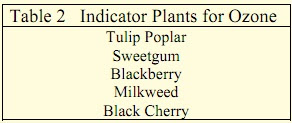 |
| photo and caption credit here |
The Trinity Root - 9/11 Memorial
"On September 11, 2001, debris from the collapsing World Trade Center towers knocked over a giant sycamore tree that had stood for nearly a century in the churchyard of St. Paul's Chapel at Broadway and Fulton Street. When the dust settled, the uprooted tree was found lying on a narrow path in the yard. It had fallen in a way that none of the historic tombstones around it were disturbed, and none of the wreckage reached the chapel.
Sculptor Steve Tobin heard the story of the sycamore and envisioned using its roots as the base for a bronze sculpture. Installed on the fourth anniversary of the terrorist attacks, the Trinity Root is a metaphor for our connectedness and our strength."
I started out this morning reading more about the ominous methane release, which has recently been haunting my thoughts - in particular today about the scientists who are so reluctant to admit that there may be a disastrous threat developing in the Arctic...because this is so reminiscent of their refusal to acknowledge that trees are dying from exposure to tropospheric ozone. They should though, because aside from the indescribable horror that implies in terms of food and and irreplaceable beautiful habitat, losing forests means we will lose an essential carbon sink, which will in turn lead to accelerated warming in short order. It's already leading to a spike in the accumulation of CO2 in the atmosphere, which came as quite a surprise, since emissions were expected to be reduced due to the economic recession.
 |
| WTC trees growing in Millstone, NJ nursery, 2009 |
The photos from last fall are interspersed with portions of an article from the Houston Chronicle, written in September, 2010. The paper interviewed Tom Cox, whose company, Environmental Design, was hired to locate and install the trees.
 |
| September 18, 2011 |
 |
| October 13, 2011 |
 |
| October 16, 2011 |
"So far, Cox said, just one tree has been lost — to a lightning strike. The others have grown to a uniform height of 30 feet and have been pruned to 12 feet so that, when all are in place, they will provide a solid canopy in the memorial area and over the nearby Port Authority transit hub. On Aug. 28, the first 16 swamp white oaks were brought in on semi-truck trailers and craned into planting troughs at street level, where the trees will form a roof garden over an underground museum."
 |
| October 18, 2011 |
"The original design called for a mix of swamp white oaks and sweet gum trees, but the blazing red fall color of the sweet gums was thought by some to be too jarring. Instead, the memorial forest will present a uniform and more muted canopy of golden yellow every autumn.
Swamp white oaks were chosen for their durability — they are “tough as nails,” in Dubin’s words and can live for as much as 300 to 350 years."
Sweet gum trees too bright? I guess, that could reflect the intense controversy that has surrounded the planning of the memorial - or maybe it's because in Bartlett's library of their own research program is a paper titled, "Ozone Injury to Landscape Plants" which has the usual descriptions of damage so familiar at Wit's End from other sources: "Higher exposures result in red or purplish stippling on the upper leaf surface...Very severe symptoms include necrotic (brown or white) stippling, spots or blotches on sides of the leaf." and "Diagnosis of ozone injury is based solely on visible symptoms of damage. If leaf stippling is present on susceptible species, inspect indicator plants (Table 2) for symptoms. If symptoms are present on indicator plants, ozone is the likely causal agent." and "There are no specific treatments available for ozone damage." and "In areas of chronically high ozone levels consider planting resistant species."
So, here's Table One where sure enough, oaks are considered tolerant:
If you've got 40 seconds, you can watch a youtube video pan of the trees with brown leaves taken on October 13, 2011...or skip it, because much more enchanting is a vimeo of Norwegian fjords. I'm quite certain the filmmaker doesn't realize that it's a tell-tale indication of decline that so many trees are practically bare of leaves in August, but it almost doesn't matter - the waterfalls and moss and mountains and clouds are that sublime. I can almost forget that the world is dying.
So, here's Table One where sure enough, oaks are considered tolerant:
and here's Table Two, which says...oops...one of those highly sensitive, indicator plants that show ozone damage first...yep...sweetgum...
There are several other brief papers at the Bartlett website describing ozone injury, such as this: "White pine is also one of the tree species most sensitive to air pollution damage. Low levels of sulfur dioxide, ozone, and fluorides will lead to needle chlorosis and tip-burn. The older needles will often fall off prematurely"..."White pine decline in landscapes has been the subject of several recent research projects."...and also such cheery prognosis as..."Remedies for needles and leaves already damaged by pollution is very simple - there is none!"
 |
| Sweetgum leaves at Wit's End, October 29, 2010 |




Around here in SW BC I do occasionally see a patch of trees in what seems to be prime condition which always makes me scratch my head consider most of the trees around look like absolute hell.
ReplyDeleteI guess maybe optimal soil conditions/watering may go a long way towards determining which trees last the longest. Though honestly I'm still surprised to find these undamaged specimens considering the overall situation here. I've noticed the same sort of effect in reverse in areas too, where in a certain area of the forest an entire stand has more or less died, but 50 feet away another stand is doing "ok" relative to what might be expected.
Have you noticed any sort of "patching" or area effect like this?
Also that VIMEO video of norway is unreal. So beautiful. That pine forest did look pretty rough though. But overall it at least looked better than here.
ReplyDeleteAnon, I don't pretend to have the answers. What I have, is questions.
ReplyDeleteThere ARE abundant close analogies for the patchy effect. Think of cancer clusters from chemical pollution.
EVERYBODY exposed to a carcinogen in the vicinity doesn't get cancer, and they don't all die at the same minute.
Same as smokers. Some get lung cancer, or other cancers, early and others famously live long lives.
There are so many other factors in play. Genetic susceptibility, and synergistic effects.
Like having AIDS, and then actually dying from an opportunistic infection like pneumonia.
Or casting people into the open sea. They will all certainly drown, sooner or later. But not at the same time.
The important point I try to make is that ozone is pre-disposing trees and other vegetation, like bleeding into the water attracts sharks.
All of which is well established in scientific research. Where the scientists shy off of is, pointing the finger.
Gail, (3 points)
ReplyDeleteHave you ever contacted James Lovelock and invited him to this blog to survey the scientific links you've amassed?
http://en.wikipedia.org/wiki/James_Lovelock
In the future every forest will probably be an artificially grown forest like the one at ground zero.
All ye look into the face of Gaia and tremble!
Catman
Hey Catman. In all the countless letters I've sent I have never written Lovelock. I guess it's ageist of me, but he's so elderly - and I suppose I figured that he got the big picture long before I did, and doesn't need to quibble over the details.
ReplyDeleteThere's an interview on YouTube where he says it's all over by 2020: methane hydrates do us in. He'll be 101 then. We'll be a generation younger.
ReplyDeletecatman
We're having a lightning storm here in January! I have to go on line.
Is it just me or is it symptomatic of the problem that the trees in this image have been planted surrounded by paving?
ReplyDeletehttp://2.bp.blogspot.com/-xD6S7oIFefA/TwcXtBwCVzI/AAAAAAAASGc/g1az_QDa4mY/s1600/WTC10%253A16.jpg
@anon re 'tis all over by 2020 due to methane clathrates' -- I don't spoze you have a link?
Pedantry, if you watch the video about these trees you'll see the very complex system put in place underneath the concrete. Their health and uniformity are obviously of paramount importance in the plan for the park.
ReplyDeleteIn any case, trees growing in remote, rural areas, and even national park forests are dying off as well.
I haven't found a methane warning from Lovelock yet but here's a terrific interview, he has an amazingly astute grasp on ecosystems, evolution and trees:
ReplyDeletehttp://www.youtube.com/watch?v=29Vip-PbuZQ